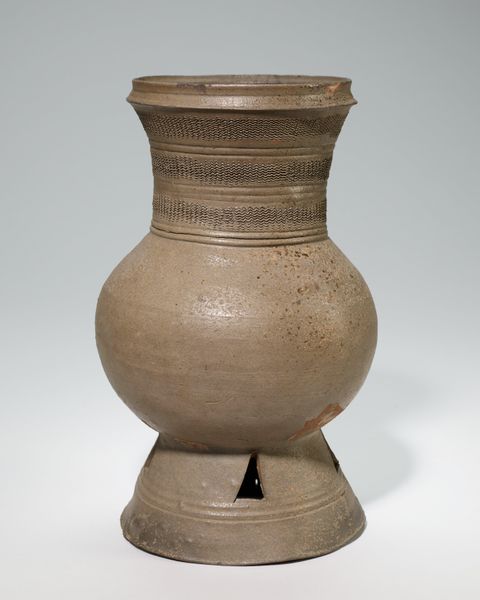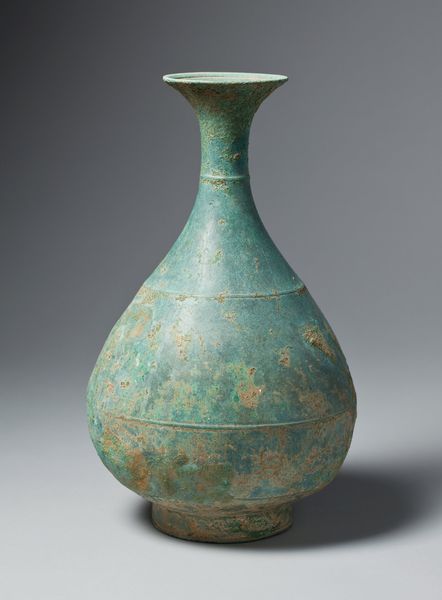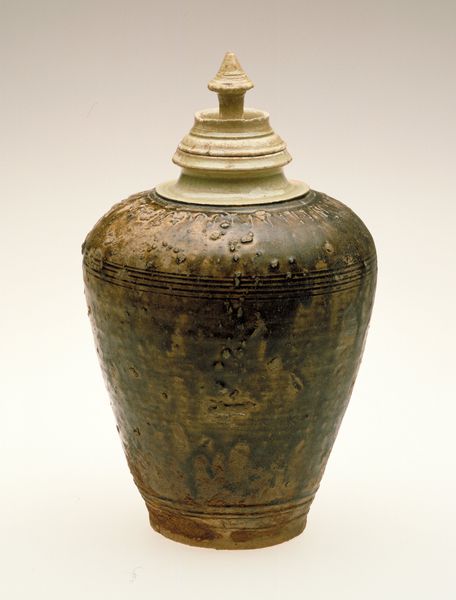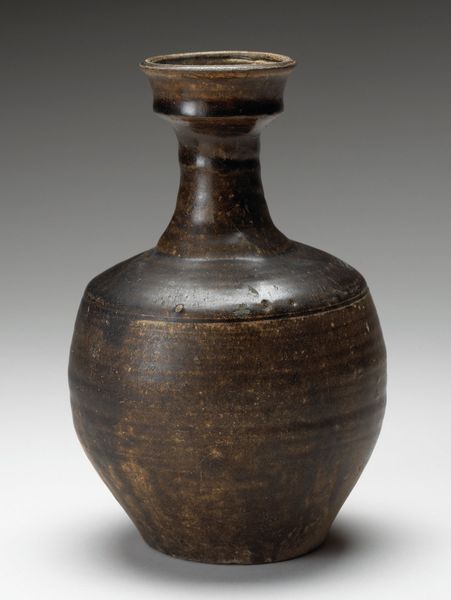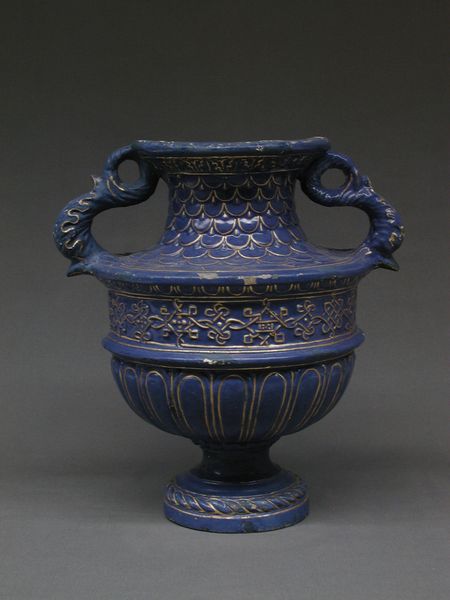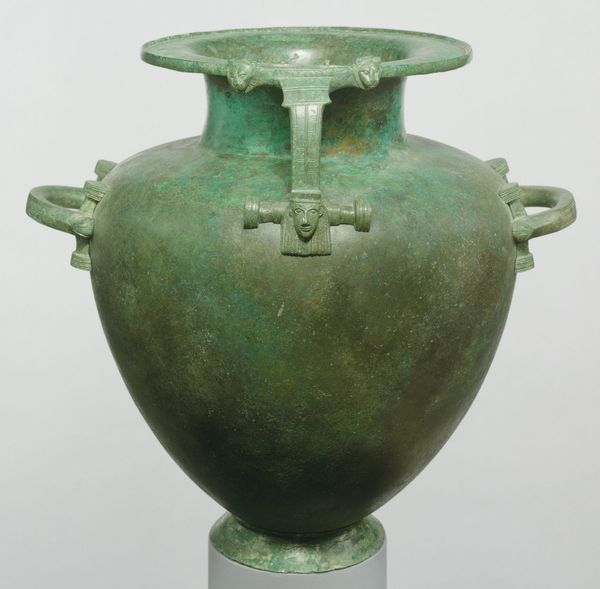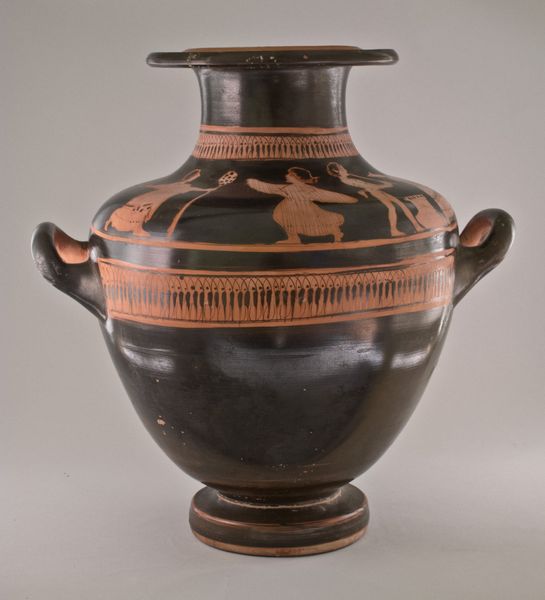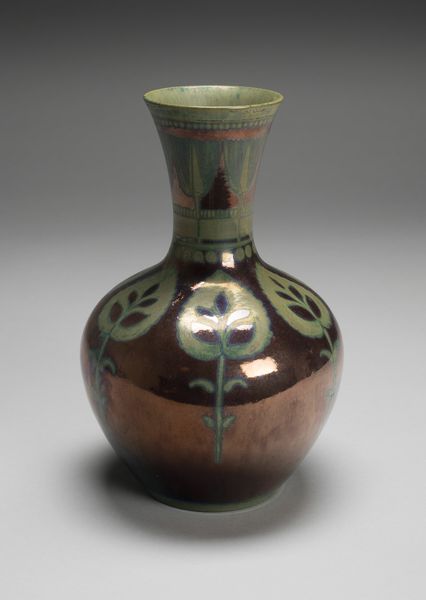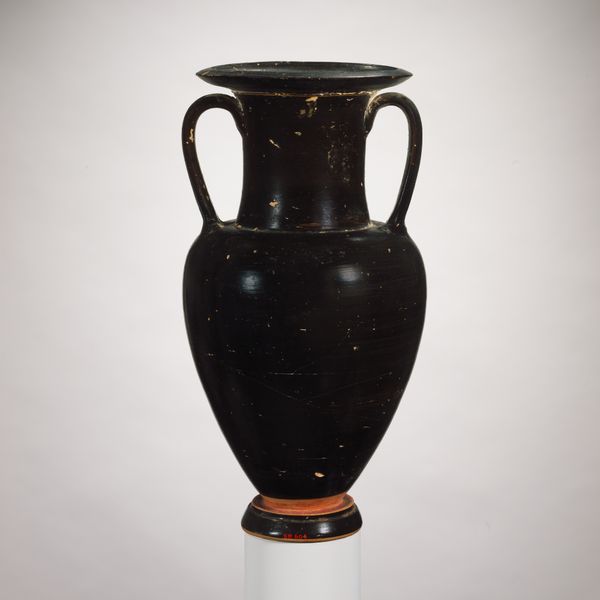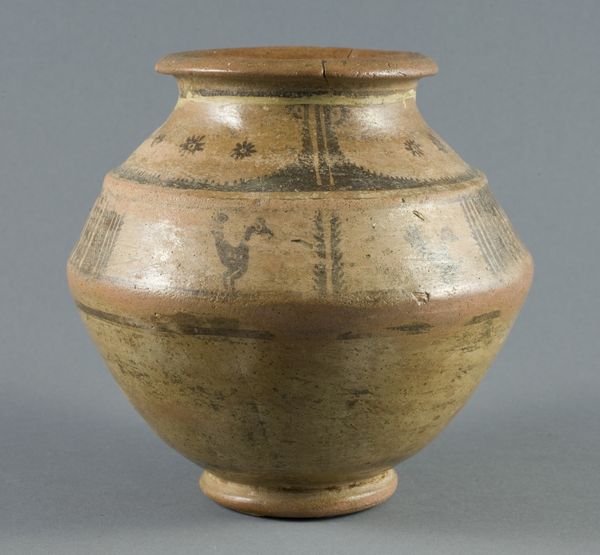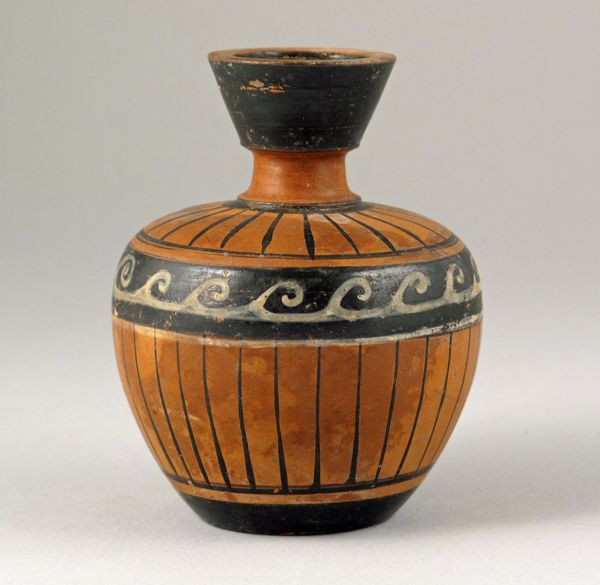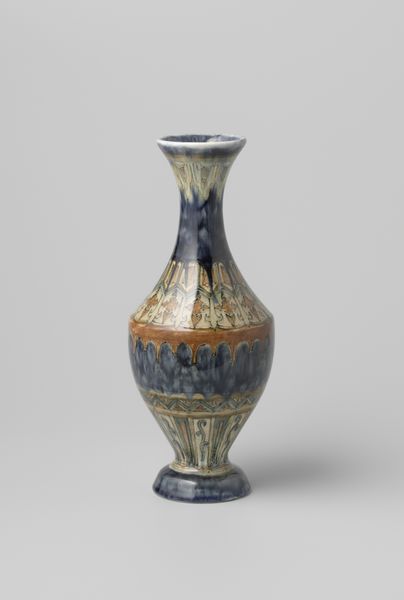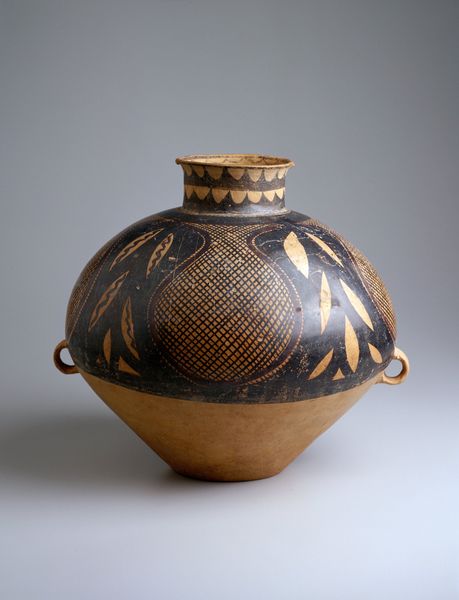
ceramic, sculpture
#
medieval
#
asian-art
#
ceramic
#
sculpture
#
ceramic
Dimensions: 13 7/16 x 8 1/2 x 8 1/2 in. (34.13 x 21.59 x 21.59 cm) (at shoulder)
Copyright: Public Domain
Curator: What a striking ceramic piece. It’s identified as a Baluster Jar, crafted around the 12th century, and you can find it in the collection of the Minneapolis Institute of Art. Editor: My first thought is that the form itself has a regal quality to it. The dark glaze lends it an austere beauty. Curator: The form does speak to functionality, doesn’t it? Consider the process of its creation, the clay itself—its extraction, preparation, and manipulation by a skilled artisan. It’s amazing that the piece still survives today. This points to an important question about the relationship between what some have called high art and craft: does utility somehow make an object inherently less valuable? Editor: That is an important question. As a historical artifact, it presents a picture of craftsmanship and technological capabilities. Were objects like this commissioned by elites to enhance status or participate in ritual? How does the availability of such objects play into social hierarchies? Curator: Well, given the relative abundance of similar wares discovered across archeological sites, this form might also have fulfilled less rarefied needs, as an element in everyday consumption for a broad segment of the population. So considering these jars brings me to consider other vessels like it and how integral they must have been to daily medieval life in Asia. Editor: Absolutely, the ubiquity and function shape its historical meaning. Its presence in numerous households could signify common customs and maybe some regional artistic similarities in functional ceramic art during the time. Perhaps it signifies access to materials, technical skills, and certain trade routes. I imagine these types of wares also appear at religious or state ceremonies? Curator: A fine point. The labor required, and who benefitted from its circulation, also must figure into it. Editor: Absolutely. I have much to think about thanks to this pot and our talk. Curator: Me too! Thinking through the making really illuminates how connected we are to the past, via things like this.
Comments
No comments
Be the first to comment and join the conversation on the ultimate creative platform.

